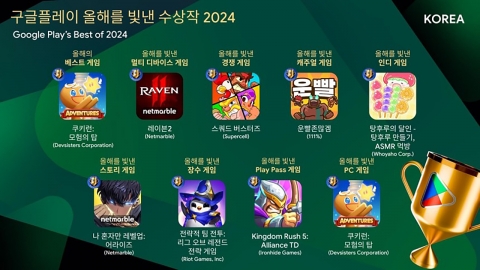■ Broadcast: YTN Radio FM 94.5 (09:00-10:00)
■ Host: Reporter Cho Tae-hyun
■ Air date: November 4, 2024 (Monday)
■ Dialogue: Kim Hye-kyung, Assistant Manager of the Korea Agro-Fisheries & Food Trade Corporation
* The text below may differ from the actual broadcast content, so please check the broadcast for more accurate information.
◆ Reporter Cho Tae-hyun (hereinafter referred to as Cho Tae-hyun): It's a week to look at the vivid price information of traditional markets and hypermarkets to see what the most delicious and cheap seasonal food is. Today, we are with Kim Hye-kyung of the Korea Agro-Fisheries & Food Trade Corporation. Hello, assistant manager.
◇ Kim Hye-kyung (hereinafter referred to as Kim Hye-kyung) of the Korea Agro-Fisheries & Food Trade Corporation: Yes, hello.
◆ Cho Tae-hyun: I was able to endure this morning's commute, but I think it's getting colder from tomorrow and even colder from Thursday, but I heard you're in Ipdong again. Please tell me what the price of agricultural products was like in this weather.
◇ Kim Hye-kyung: Fall foliage is also later than usual this fall due to the late heat, and as temperatures gradually fall, agricultural prices are generally stabilizing. This week, in particular, cucumbers, spinach, and tomatoes, which were affected by the crop due to high temperatures, were inexpensive as the volume of imports increased. In the case of Dadagi-Oi, the price of KRW 13,000 based on 10 items, which was KRW 16,500 in early October, fell to KRW 14,000 in mid-October and KRW 13,000 in late October. In the case of spinach, the price was 1,140 won based on 100g, down 37% from 10 days ago, and in the case of tomatoes, it was 11,000 won based on 1kg, which was 15% cheaper than 10 days ago. In particular, tomatoes were difficult to supply, with some hamburgers missing tomatoes, but while consumption has decreased due to high prices, shipments have increased by about 700 tons compared to the previous quarter, stabilizing prices.
◆ Cho Tae-hyun: Cucumber, spinach, and tomato prices were low. What items went up in price?
◇ [Kim Hye-kyung] Yes. This week, oyster prices rose slightly for onions, pears, and seafood. In the case of onions, the price increased by 3.6% compared to the previous week to 2,150 won based on 1kg, and in the case of Shingo pears, the price increased by 3% compared to the previous week to 28,300 won based on 10 ships. In the case of oysters, it was 20,300 won based on 1kg, which was 4.6% more expensive than the previous week. Oyster also saw a slight increase in prices as supply decreased due to high water temperatures, while consumption was increasing due to the kimchi-making season in the future.
◆ Cho Tae-hyun: I told you earlier that this Thursday is Ipdong, but at this point, the rite of passage that comes to mind, Kimjang. I'm also curious about how to set the timing of making kimchi this year, but what do you think about AT? Please give me some advice.
◇ [Kim Hye-kyung] Yes. It usually starts to get cold after Ipdong, so it is said that in the past, kimchi was made around Ipdong. However, these days, the kimchi-making period is gradually being delayed due to warming, and this year, from mid-November to early December, it is expected to be a full-fledged kimchi-making season. In particular, the government is pushing for various discount policies in time for the kimchi-making period to support households' burden of kimchi. Since October 24, the mart and traditional markets have been selling up to 40% off cabbage and radish, which are the main ingredients for kimchi, and in the case of sea salt, government stockpiles will be supplied to marts and traditional markets at a low price from early November. In addition, major kimchi ingredients such as salted fish and oysters will be sold at a maximum of 50% discount from the 13th to December 1st, so I recommend you to prepare kimchi in time for the kimchi season and get a discount and make delicious kimchi.
◆ Cho Tae-hyun: Lastly, please recommend seasonal marine products that can be included in the shopping basket.
◇ Kim Hye-kyung: I recommend scallops for seasonal marine products this week. A favorite scallop at home is the red-colored Haemann scallop, which is in season between November and December. Scallops are rich in essential amino acids and are rich in protein and minerals, which are also good for low-calorie diets when combined with vegetables. To pick fresh scallops, it is recommended that the shells have a glossy, parched glow. It is also recommended that you choose the one with your mouth closed, as it may have gone bad if the shell is already open before purchasing.
◆ Cho Tae-hyun: This has been Kim Hye-kyung, deputy manager of the Korea Agro-Fisheries & Food Trade Corporation. Thank you for the good information today as well.
◇ [Kim Hye-kyung] Yes, thank you.
[Copyright holder (c) YTN Unauthorized reproduction, redistribution and use of AI data prohibited]
Economy
More- The railway union declared a 'general strike' next month...Is there a traffic jam?
- Myeong-dong's land price is about 10 million won per square meter.First place is Milan.
- "Do you want to go to a rural hot spring?"Travel industry 'nice to see' as small Japanese city emerges
- "Commercial Law Revision Should Be Stopped" Urgent Statement by 16 Presidents, including Samsung and SK






![[Site Y] "Acting you've never seen before"..."Hyperknife" Park Eunbin is a doctor this time.](https://image.ytn.co.kr/general/jpg/2024/1121/202411211747565909_h.jpg)



